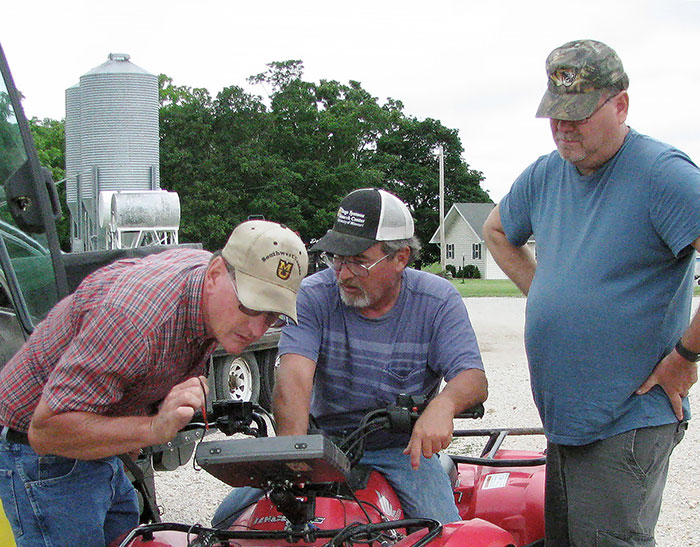
Photo: University of Missouri
Advanced pasture management tools could be right at your fingertips in a few years. The University of Missouri (MU) Extension is in the process of creating a mobile application to aid decision-making for livestock producers after receiving a $444,000 USDA technology grant.
Stacey Hamilton, a Missouri dairy extension specialist, says that the goal of the three-year grant is to help farmers make better pasture decisions by using affordable technology. Missouri is a national leader in measuring the height and mass of forage in pastures using sonar technology on an all-terrain vehicle, Hamilton says. An onboard computer then sends the sensor’s data to the MU Grazing Wedge website, which translates the data into estimates of the amount of available forage.
“Basically, the Grazing Wedge is a weekly inventory of your farm,” Hamilton says. “Instead of knowing how many bales of hay you have stored in the barn, and then subtracting bales as they are used, or adding bales, the Grazing Wedge figures how much forage you have available in pastures for feed or harvest.”
While the Grazing Wedge has been a reliable and helpful tool for years, it had room for improvement. Ryan Lock, one of the researchers on the project, noted that it required a lot of time walking across pastures, taking measurements, and manually entering data on the website.
“The innovation resides in linking the sensor, a producer’s smartphone, and the website through the mobile app. This technology enhances labor efficiency and provides better opportunity to manage grazing systems and natural resources,” Lock says.
The application will also prove to be more consumer friendly as it will cut out the need and cost of the military-grade computer, which was used in the past to endure traveling across rugged pastures. The smartphone app, called PaddockTrac, will be utilized as its replacement so many more producers can have access to this technology.
PaddockTrac will have three main components. First, pastures will be mapped and saved to a secure account using the MU website. Second, farmers will measure the height of forage in their pastures using sonar technology on an ATV (all-terrain vehicle). Information will then be sent through a wireless Bluetooth connection to the farmer’s smartphone app. When internet connection is available, the PaddockTrac app will upload the data to the MU Grazing Wedge website. Finally, the website will analyze the data and apply it to the fields.
“Before you can get back to your computer at home, the Grazing Wedge will have a report on how much grass you have in each paddock,” Hamilton says.
This technology will enable farmers to decide where to graze first and if there will be extra forage to harvest as hay or silage. MU Extension plans to recruit farmers to pilot test the application in 2018.

Lauren Peterson served as the 2017 Hay & Forage Grower summer editorial intern. She is from Wyanet, Ill., and currently attends Kansas State University where she is pursuing a degree in agricultural communications and journalism. While at school, Lauren works at the KSU dairy farm and is an active member of the Horseman’s Association.

